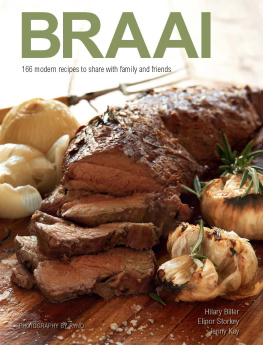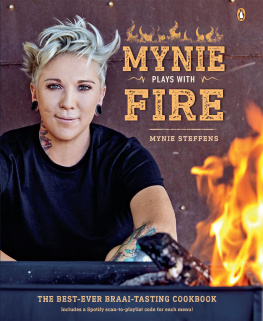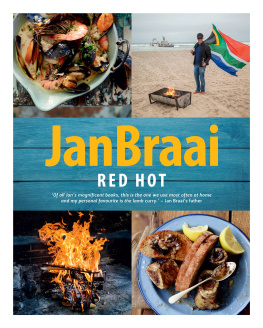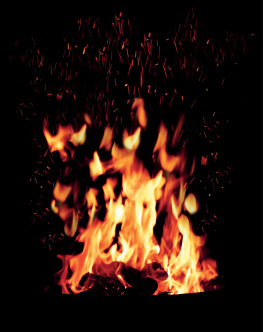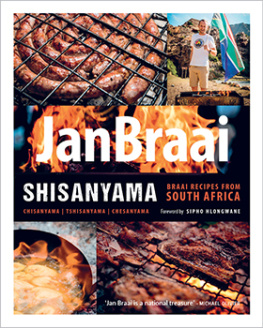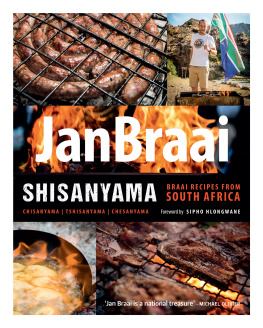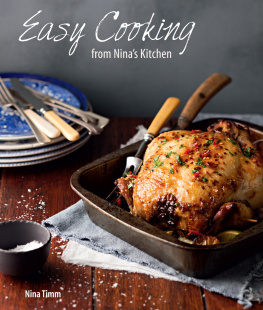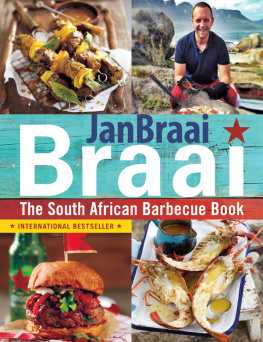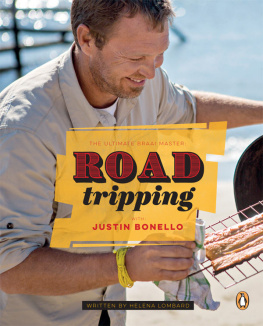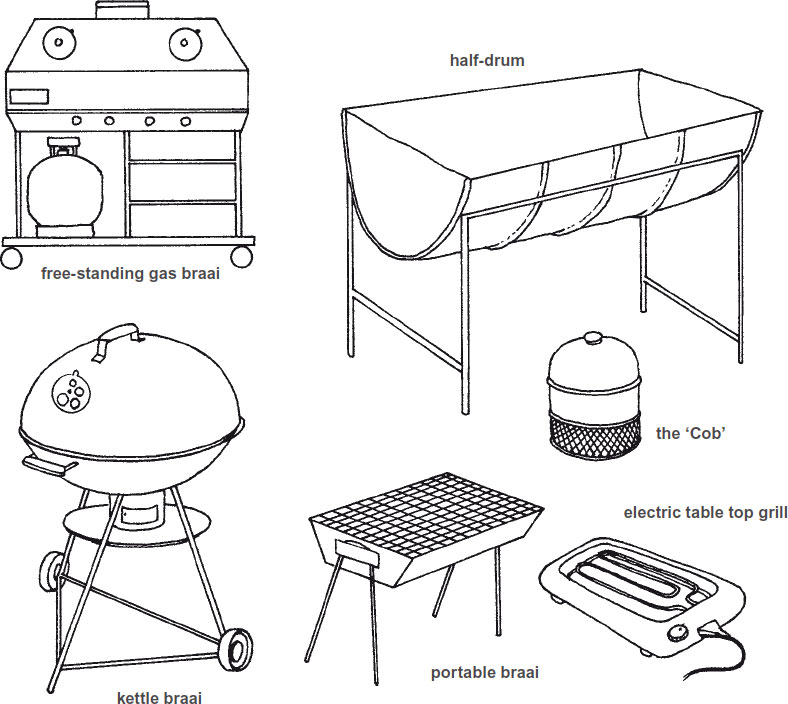Struik Lifestyle (an imprint of Random House Struik (Pty) Ltd) Company Reg. No. 1966/003153/07 Wembley Square, First Floor Solan Road, Gardens Cape Town 8001 Visit us at
www.randomstruik.co.za First published in 2008 by Struik Publishers This ebook edition published in 2013 by Struik Lifestyle Copyright in published edition: Random House Struik (Pty) Ltd 2008 Copyright in text: Hilary Biller, Elinor Storkey, Jenny Kay 2008 Copyright in illustrations: Random House Struik (Pty) Ltd 2008 Copyright in photographs: Random House Struik (Pty) Ltd 2008
Publisher: Linda de Villiers
Managing editor: Cecilia Barfield
Editors: Irma van Wyk and Gill Gordon
Designer: Helen Henn
Photographer: Ryno
Stylist: Brita du Plessis
Illustrator: James Berrang
Indexer: Gill Gordon All rights reserved. No part of this publication may be reproduced, stored in a retrieval system, or transmitted, in any form or by any means, electronic, mechanical, photocopying, recording or otherwise, without the prior written permission of the copyright owner(s). ISBN 978 177007 506 1 (Print)
BRAAI Contents
Introduction Cooking over a flame is intertwined with South African culture. Not many people can resist the unmistakeable aroma of food cooked on a braai.
Its our favourite way of eating and entertaining. Braaiing has evolved from a rudimentary wood fire for chops and wors into a whole culture of state-of-the-art equipment, recipe books, gadgets and gizmos. DIFFERENT TYPES OF BRAAIGAS BRAAIS The most basic gas braai consists of a gas bottle with a grid, skottel (dish or basin), solid griddle or potjie attachment. Gas braais are portable and can be used anywhere. They are not very large and are not suitable for cooking on a large scale, unless more than one is available. Weber Q Gas Braai These come in a variety of sizes, Weber Q 100, 200 and 300.
They can be used for direct as well as indirect methods () of cooking. For indirect cooking, the cast-iron grid gets very hot, so you need to turn the flame down and place the items for cooking in the middle of the grid. A variety of attachments are available. Large, free-standing These are available in a variety of sizes with an assortment of attachments as well as a rotisserie. Larger free-standing braais have the option of a griddle section as well as a solid plate section. Most also have a single gas ring on the side, which can hold a pot.
The gas can be varied for indirect cooking. Generally, these braais are not portable because of their size. Built-in Built-in gas braais are very popular, especially in indoor braai rooms. Always ensure that there is a safe, well-ventilated place for the gas bottle to be stored. CHARCOAL BRAAIS Charcoal braais can be as basic as a hole in the ground and as sophisticated as a kettle braai. Half-drum This is half a 44-gallon drum that has been mounted onto legs.
Because of its size, it is not very portable; however, if on wheels, it can easily be moved. A half-drum braai should always have holes in the base for air circulation and to help dispose of burned ashes. Usually clay bricks are put in the base and the fire built on top of them. Normally this kind of braai does not have much more than a grid to cook on and the cooking height cannot be adjusted very easily. However, because of their size, they are very useful for cooking large quantities of meat. Portable These are available in many sizes and come with a range of attachments.
There are portable braais to suit all your requirements. The Cob This is a very useful portable braai that works on the same principle as a kettle braai. It is best for cooking small portions, such as a whole chicken or other roasts. Built-in These are very fashionable and one can hardly find a townhouse or home that doesnt have one already built in. Built-in braais vary from the very basic to the ultra sophisticated, which include adjustable shelves and a rotisserie. THE KETTLE BRAAI The kettle grill was invented in 1951 by an American called George Stephen, who was an avid braai buff but found that the flat grill didnt work well in rainy and windy weather.
At the time, he was working for Weber Brothers Metal Works, a manufacturer of nautical buoys. He had the idea of fitting a metal grate into one of the spun metal bowls used for buoy making. He then made a cover with vents from the same metal. In 1952 he marketed his grill as Georges Kettle. The advantage of the deep-covered kettle grill was that, as well as deflecting wind and rain, it transformed an ordinary grill into an oven that could roast food. ELECTRIC TABLETOP GRILLS Tabletop grills are fuelled by electricity. ELECTRIC TABLETOP GRILLS Tabletop grills are fuelled by electricity.
They are preheated; some have a variable heat control while others have just one setting. When piping hot, they can be used to cook any meat or vegetable that uses the direct heat method of cooking. Their disadvantage is that they can only be used where there is a supply of electricity.
Braais come in many shapes and sizes, so you are sure to find one that suits your needs. TIPS FOR BUYING A BRAAI
BUDGET:Decide what you can afford to spend on a braai, then look at the available products in your price range.
NEEDS: Buy the product that will suit your needs.
CONSTRUCTION: Whatever type of braai you choose, make sure it is sturdily constructed; if it appears rickety on the shop floor, it will most likely fall apart in your back yard.
QUALITY OF THE GRATES: Good-quality grills have grates that are made of cast iron, stainless steel or porcelain-covered aluminium.
BRAAI ACCESSORIES There are a few essential accessories that the serious braaier must have, and then there are those nice-to-have accessories that you just cannot resist when browsing the shelves of speciality stores.
BRAAI ACCESSORIES There are a few essential accessories that the serious braaier must have, and then there are those nice-to-have accessories that you just cannot resist when browsing the shelves of speciality stores.
These also make great gifts for the braai enthusiast. ESSENTIAL EQUIPMENTTONGS: Preferably long-handled, to avoid getting your fingers scorched. LONG-PRONGED FORK: Use this only for lifting large roasts and poultry from the grill. Never poke meat with a fork during cooking, as this will result in the loss of all the natural juices. BASTING BRUSH: A brush is essential for basting meat with marinade during cooking. If possible, choose one with a long handle.
If using a short-handled brush, it is advisable to use an oven glove, as the addition of marinades can sometimes cause flare-ups. The brush should preferably have natural bristles; many modern ones are made from silicone. Plastic bristles are not suitable, as they are likely to melt. APRON: Some people may object to wearing an apron, but you can save yourself a lot of food splashes if you cover up while braaiing.

